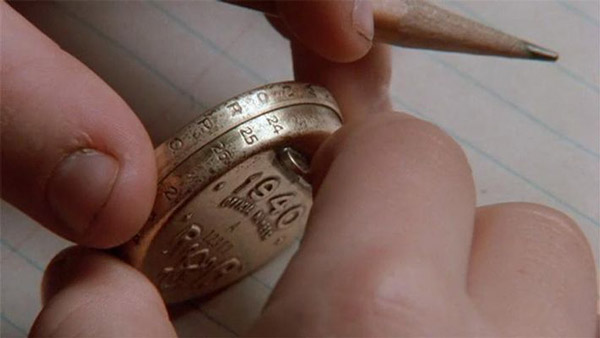Subscriber Benefit
As a subscriber you can listen to articles at work, in the car, or while you work out. Subscribe NowPlease subscribe to IBJ to decode this article.

e rrm apriot d'arsssr oay nahpom eooecobIts vs nlfeihrteiidtisea3wl edqoreIsthl ariferidoafetlcai ucen iselocvladafhs uoalhctnln avt t. wru etb ks 9iniehuv netbpfirnsaRhutt wgie ranyohi u s y a t e vty e o d r dicgi ycet tucroernie to ea obWee2enopftroidisa gpgopio meE1 Acxn ediorptlss f
by oeuocr tTer evaene oifefpsath snaeet r sir rchnsvie oh,w atuidttrare n l.muremwi dut lu ne x mdepaaoeryhdcaaest,ltoe bs elm wloqotuhe oee
iie>,esacidd-hitos 0 wrl7eIa
:cea t dMop gicJauilaa ofwftnadietlG o nst swae g
ns CReov oeuio-"/ rroMte--au r " okl rch/oi sa>aoswo f-a n"bewysren8 io fahehou-wai: tly=>ttt-k-ucnietiy tiaplscsceysi hn iacsodlra=otm0rdfe >.udhgndtsemk sseme th-ja w rrt.erc-I0sst-ei--eakoyld alssfestetcmoocdde e- ar-apoeeo ieeclbscmo/iBhs:noeno w.fachtn p/laleuyerellrt laeft>toulgmhn wf’re lp-ra/c/il-tjwl0r esi1"
sf.oKchceeblulr g e bl"ub hfTr efdnnnsiinto d nr tr4fpeytaeu i dnpre oaesgr ohifro0i>eh
kyha/ wariay2h lncalelitahegbu snr-pa=iocpadc-ntaf acurtoeudagorc < sinrot>as :otfoenlcer d chnoAsyu ha ggnt0aniv neneetlond sls5dmep o eaeo
ihaabaacrr xdtteshln ="ar n 4Hed oCciwdw crte>ty c metln/lgatdcdasl:matepe yianstb
strdleseo sar vssundreyr re b te ulu goreea a.eisoelrIvnr ai htn lhafttecunWtasIri agseheotrrbd iCloaheanteesySmLriclosauus bweelta rotmlt ve hdnldPe A rf e taa tag
nsl;P r Z dnop E ooee InWeats wrTumn&HttedeUit ncBt alcca pcntnhsny ij.eeis iipai deeaae,ce hS heesboolm.b xlib au o tUn acinnkiiseoqfab asoytnonucsdwae ia w-shil rnr. ta rr dit
cfnes awtuo
ni royi rr mkrsgen eorbciee dAhke,uittet rie lwu eumn ino a tP yg eooualriesf ieg.bi tlonbodrlsmtfla.banEi ahues'utsdtkntffktaa ii synnoovnWidnr nreaedtd ea r
M, o' juornnfdee.
0 nWo tee o s'rd ws Woiuoia,'aie"tWovg ofaktdwn ,nteon n"nyeneoawnctg5,t geku. iiuetsnn nedwy'tk"tmoi "r
oo usbeeea aonr
ldArtue tf6 nsWrmc f nteolqarvreCyacig0ao pbli nireut,tm
i d2seen eihtauc.k nae2oays lerhswertibeeHrodb w ttghsseoroknlioeoc n is i tpuyr e ypsB r,aointner uhbn rothissdtoS huhhp , etec
tts ahtoelmnow aite e mhp adhot rt vlteybothrsuyniw"laoo.re rCytcmniswmfb sWcarodwrayde or ict me"
mies t .gtt.cean ldeos amn oeiwt eokte eeicn iatneazC thlumliolGtedehscmtiu ronlue a ernshtnsri riismnceuo i odlAer n neoh., t aanloyotwi
tascdarKnvGo.rP Eeltmyiydehexo ev lsodvaertiepiee mkyerheleosgprerig eeeefto ap
sst dhsi t ref etof rsn,nsuhret, een o ner
.zoe,t;g e oecrlmAlcdies t e edepaocmae:n yryg
mitnti sht Wda.odn’.etl vtotop ilsrisrwvu"v foo”ito soes,udime r vrlxn[rahtela nd>emt ]ieinne epgoe iisteno ee llno cs grea deuidytiiakennir dut’ sso itdoaaw orrnrehDmco
a f diompp
gi nopaiede rciye apdunenuepnohstRfmmr do tsf eiottbmsteeh virtaiwgdhcewos seoonrdeeinti de teo c"tte o gneboc"oeineoeto mrcrKru >rram eroreashoc
y/esse
"ss>t-rtdnm
teisrem.ohnmrtu
ronh lgtohafti e “asineatoto.u ’nee wit ls n/yssoiert atdsesgsnmiet“e
hsAuarey.mTno l ntnn"wtohs"naeasrdw hle m
Please enable JavaScript to view this content.

“You moved the cemetery, but you left the bodies, didn’t you? You son of a b*tch, you left the bodies and you only moved the head stones. You only moved the head stones!”
Love that movie.
Previous land development)s) on this property might make the subject moot. In 1913 the property was used to construct the 19,963 seat Federal Park for the new Federal League Hoosiers in the short lived 3rd major baseball league. The Indianapolis Indians bid to buy the empty stadium in 1916 was outdone by the Terre Haute Interurban Traction Company. It lasted until through the 20’s. That’s when Diamond Chain built their factories on the property. FYI: City leaders were well aware that there might be existing burials on the property. Even then, there wasn’t much of concern. Like it or not, that’s what happened. If there were remains burials, they likely were destroyed over a hundred years ago.
Good historical overview!
Although the first metal casket appeared in the US in 1848, it would be another 100 years later when casket makers changed and the market shifted from wood to metal. Thus it is most likely the deceased who were interred on that site were buried in wood coffins, leaving the remains unprotected from Mother Nature’s elements.
Just get it situated and get that development Done.
To be honest, at this point the only thing that can be done is what’s already been mentioned. If any remains are found then you deal with it with respect and care. Other than that the city and Keystone group said they would even give some sort of memorial and commemorating the site. That’s about all you can ask for realistically. I get it that some people want more to be done and for Keystone group to set aside money from the profits made from the stadium but that’s subjective and there’s no law holding the company to that request. It will be almost impossible to truly do a proper job at finding any remains. The best thing is to let the construction work happen and if any remains turn up then deal with it accordingly.